Displaced paintings by Armando. Artists fleeing the city. An eye-catcher who brought financial disaster and summer festivals that attract tens of thousands of visitors every year.
And you thought Amersfoort was boring? A footnote along the A1? Forget it. Let me tell you about this city struggling with its cultural identity. A story in eighteen impressions.
Guilty landscape
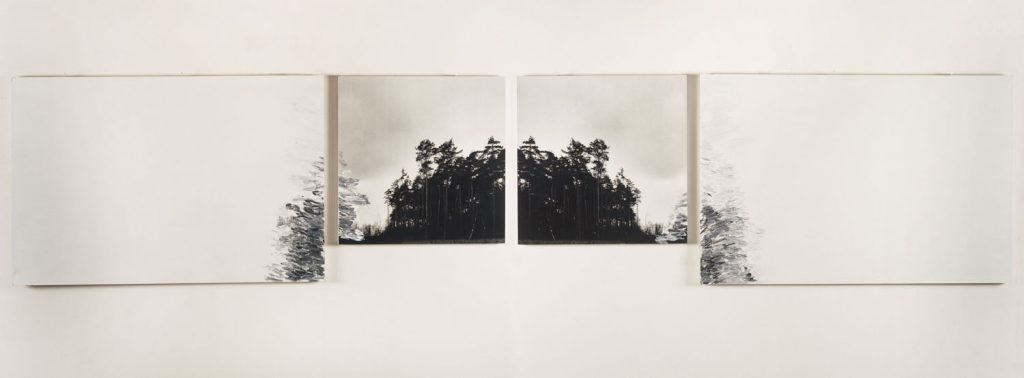
In his youth during World War II, the artist Armando played in the woods near Kamp Amersfoort. He later derived his theory of the 'guilty landscape' from it. The camp held tens of thousands of mainly political prisoners for short or long periods of time. Many of them were murdered by the SS.
Armando declared the trees surrounding the camp "guilty", not because they allowed the atrocities to happen, but because they refused to bear witness. The forest simply grew on as if nothing had happened and in this way also contributed to erasing the traces.
Armando's work is strongly influenced by World War II. Especially his ferocious man-sized black-and-white paintings with ladders, flags and trees make the evil and lost innocence of the landscape unforgettably visible.
Devastating fire

When I moved to Amersfoort over 12 years ago, I visited the museum dedicated to his work almost every week. Why his paintings impressed me so much? I often wondered, while sitting on a bench in the museum. I haven't found a conclusive answer. Why is a person touched by art? Does one painting take your breath away and another leaves you completely cold?
The last time I visited the Armando museum was on 21 October 2007. A day later, a blaze destroyed the Elleboog church in which the museum was located. Much of the museum's collection was lost. The paintings saved from the fire were no longer welcome in the city. No new place was found for them for reasons I still don't understand. Today, they hang displaced in the Museum Oud Amelisweerd, near Utrecht.
It's no coincidence that I found these cultural guide to Amersfoort start with Armando's paintings. First, I think they should immediately return to the city where they belong, as a location my personal preference is the monument that Kamp Amersfoort is today.
Cultural struggle
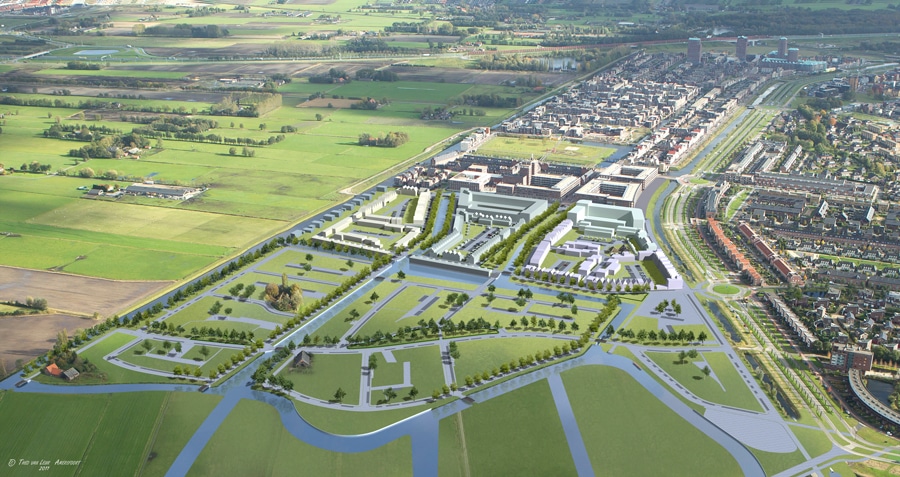
But their displaced status reveals something else. Amersfoort and culture are regularly an uneasy combination. The city struggles with its cultural identity.
To understand that struggle, it is necessary to look back for a moment. Amersfoort was a dull provincial town for a long time. Then it became a growth city and one neighbourhood after another was built. This brought with it a new dynamic, including numerous new cultural initiatives.
The period of unbridled expansion is now over. No more new urban districts are planned. After all the dynamism, the limits have been reached and the standstill is affecting the city's psyche. How to proceed now?
World music and mix of styles
With growth came festivals. Amersfoort: festival city. I usually avoid them because of the crowds, but many tens of thousands of visitors experience a lot of fun every year.
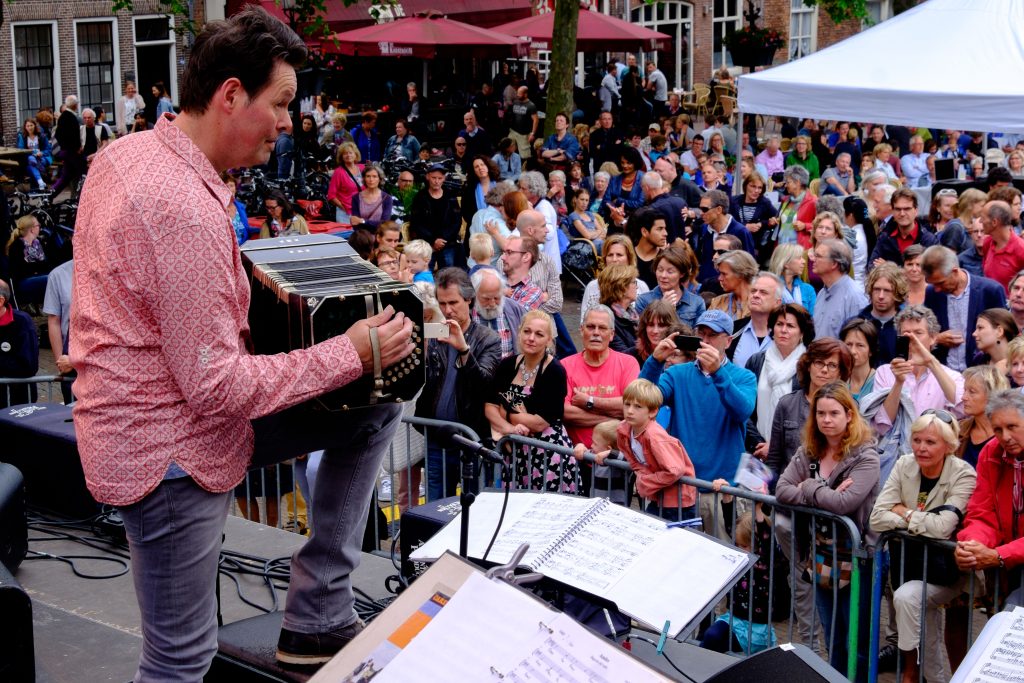
The festival season kicks off in June with the four-day Amersfoort Jazz. The programme is characterised by a strong focus on world music and a mix of styles. In 2017, Spain and flamenco take centre stage. Artist in residence is US tenor saxophonist Houston Person. The now 83-year-old jazz veteran once played mainly hardbop and swing, but has become known with souljazz. He recorded more than 150 albums and today fuses hard bop, pop, disco, blues, gospel and R&B. This produces a unique sound, according to those in the know.
[bol_product_links block_id=”bol_58e4bf6f7d60f_selected-products” products=”1000004003133596,1000004010720656,9200000035219561,1000004003218071″ name="houston" sub_id="onno" link_color="003399″ subtitle_color="000000″ pricetype_color="000000″ price_color="CC3300″ deliverytime_color="009900″ background_color="FFFFFF" border_color="D2D2D2″ width="600″ cols="2″ show_bol_logo="0″ show_price="1″ show_rating="1″ show_deliverytime="1″ link_target="1″ image_size="1″ admin_preview="1″]Just under two months later Spoffin the European hub of streetarts.
Acrobats and fire-eaters
Acrobats, fire-eaters, mimes, actors and dancers show their skills throughout the city centre. As a layman, I dare not give an opinion on the level, but according to the organisers, the performances are the cream of the street art crop.
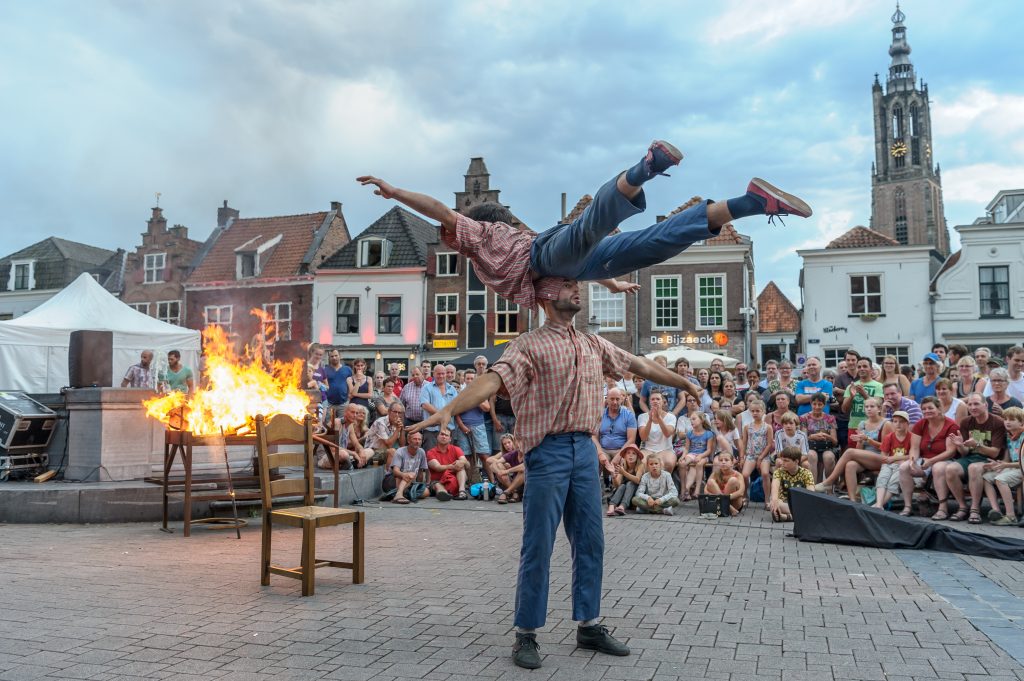
To be fair, I personally don't have much with streetarts, but I know plenty of people who love it and have seen wonderful, spectacular and moving performances there.
Spanish songs
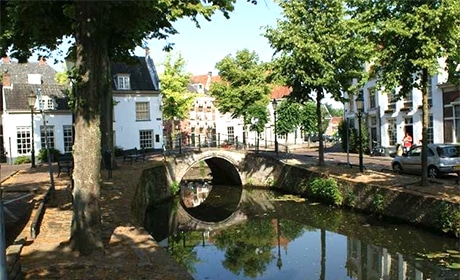
Now don't think I'm a vinegar-pisser. There are indeed festivals that make my heart beat faster. The Hawk Concerts for example. A kind of mini Prinsengracht concert, but spread over three days, from one of Amersfoort's most beautiful canals.
Or Amerfortissimo, pure and unadulterated classical chamber music played by top Dutch musicians. An initiative of violinist Lonneke van Straalen, held for the seventh time this year and for the first time under the artistic direction of the Ragazze Quartet. I heard Henk Neven sing beautiful Spanish songs there.
[bol_product_links block_id=”bol_58e4c012d8690_selected-products” products=”9200000057909165,9200000040702255″ name="ragazze" sub_id="onno" link_color="003399″ subtitle_color="000000″ pricetype_color="000000″ price_color="CC3300″ deliverytime_color="009900″ background_color="FFFFFF" border_colour="D2D2D2″ width="600″ cols="2″ show_bol_logo="0″ show_price="1″ show_rating="1″ show_deliverytime="1″ link_target="1″ image_size="0″ admin_preview="1″]Self-destructive
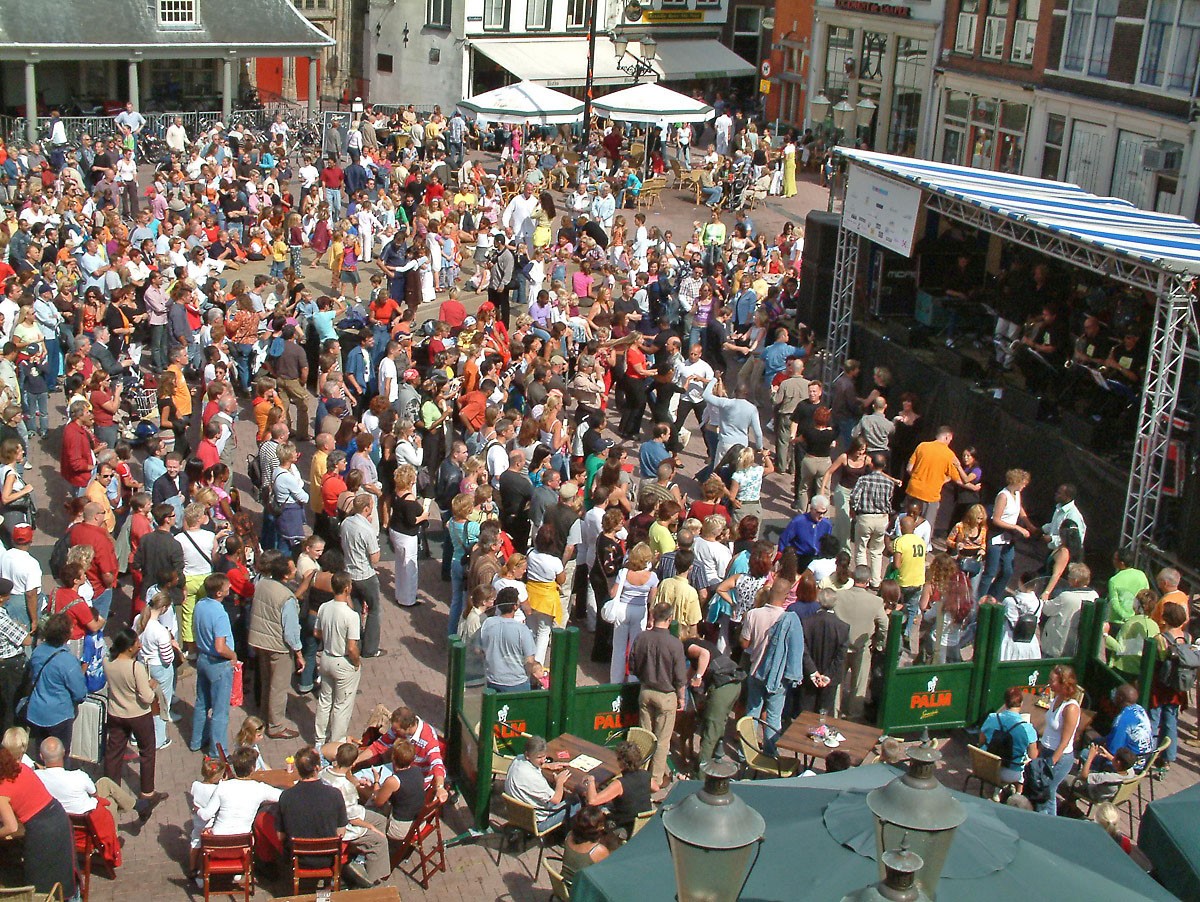
Then again, that strange contradiction. The struggle with cultural identity. Or in this case, could one speak of a self-destructive character trait?
Because it was precisely the most successful festival that had to call it quits in 2013. I am talking about Dias Latinos: the summer carnival with Latin American dance and music that gave Amersfoort a weekend of South American temperament. Tropical atmospheres on the Eem.
Until the organisation made a (financial) mess of it, the municipality turned off the subsidy tap and sponsors dropped out. An eternal shame. But there is hope. A first restart failed, but a new attempt will be made next summer, with Jörgen Raymann as festival director. In any case, his entry was to be welcomed: "salsa, merengue and bachata, all those Latin styles fall into the 'happy music' category for me. It makes me really happy."
Unexpected beauty

As I write this, the summer festivals are still in their winter hibernation. Sparrows twitter in the garden; a first blackbird collects nesting material. Nice weather for a cultural city walk, starting at the neat theatre Flint. A theatre as every city knows it, with predictable programming of lots of cabaret, the occasional musical, poorly attended plays, family shows and operas performed by Eastern European companies. Nothing wrong with that, nothing to get excited about either.
Although, I recently saw Opera2day's Dr Miracle's last illusion there. A mix of magic, horror and beautifully sung arias by Bellini, Offenbach, Verdi and Wagner, among others. Especially the ending (Dr Miracle's last illusion accompanied by the Liebestod from Tristan und Isolde) remained in my head for days to come
Beauty is also present in a decent theatre.
A peek inside Mondrian's head
Culture should avoid beaten paths. My city walk follows an unpredictable route. Unexpectedly, I find myself in front of the birth house of Piet Mondrian, who lived in Amersfoort from 1872 to 1880. The museum inside the house is dedicated to the life and work of the co-founder of De Stijl. After a renovation, it reopens just in time for the theme year 'Mondrian to Dutch Design'.
Because the important paintings are missing (a small collection of early works hangs), the Mondrian House might be a bit like a cake without whipped cream. But thanks to the two rooms with new audiovisual presentations, that cake did taste a little better.
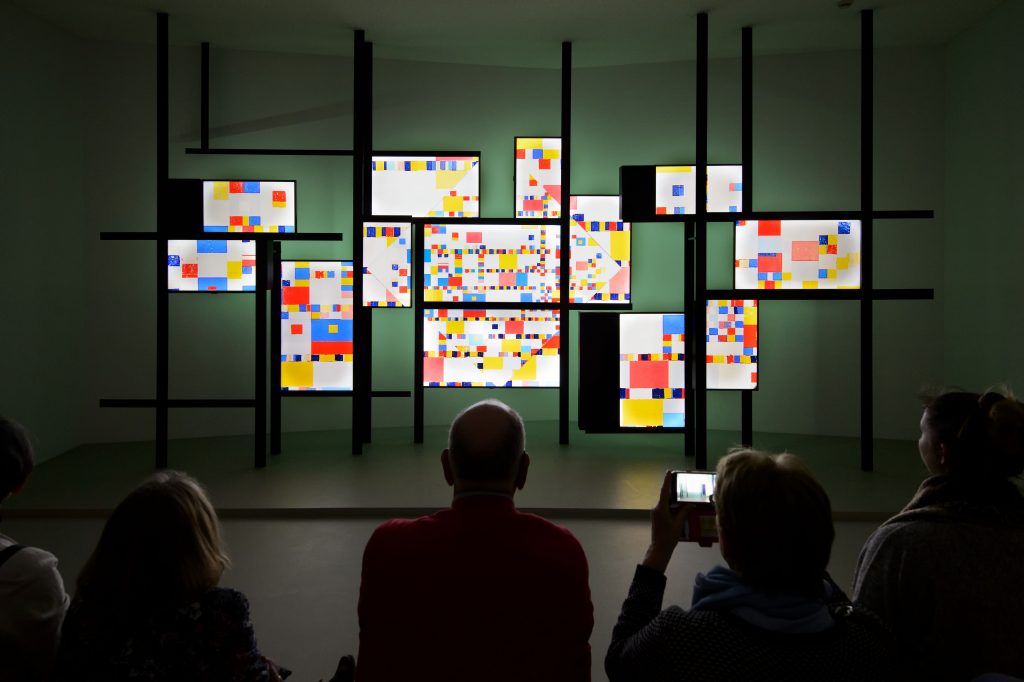
Thirteen screens show the development of his work in five minutes. From realistic landscapes through luministic scenes to abstract constructions with the characteristic lines and planes, in the primary colours red, yellow and blue, supplemented by white. All to the accompaniment of matching music (classical, jazz). And in a room with a transparent white cube, sound bites, historical fragments and flashes of colour give a glimpse into the mind of the artist, who works on his Victory Boogie Woogie in New York.
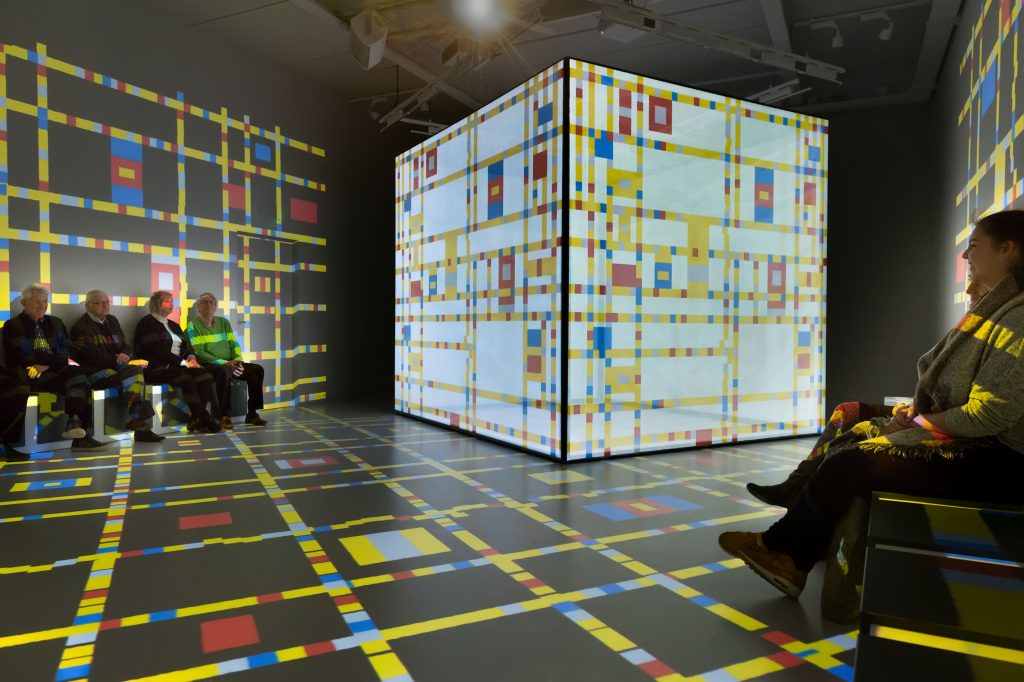
The Mondrian House would like to further renovate and renew. For this, 1.2 million euros is needed. Money that is not there yet. Hopes are pinned on municipality, province, cultural funds and sponsors.
Saved in the nick of time
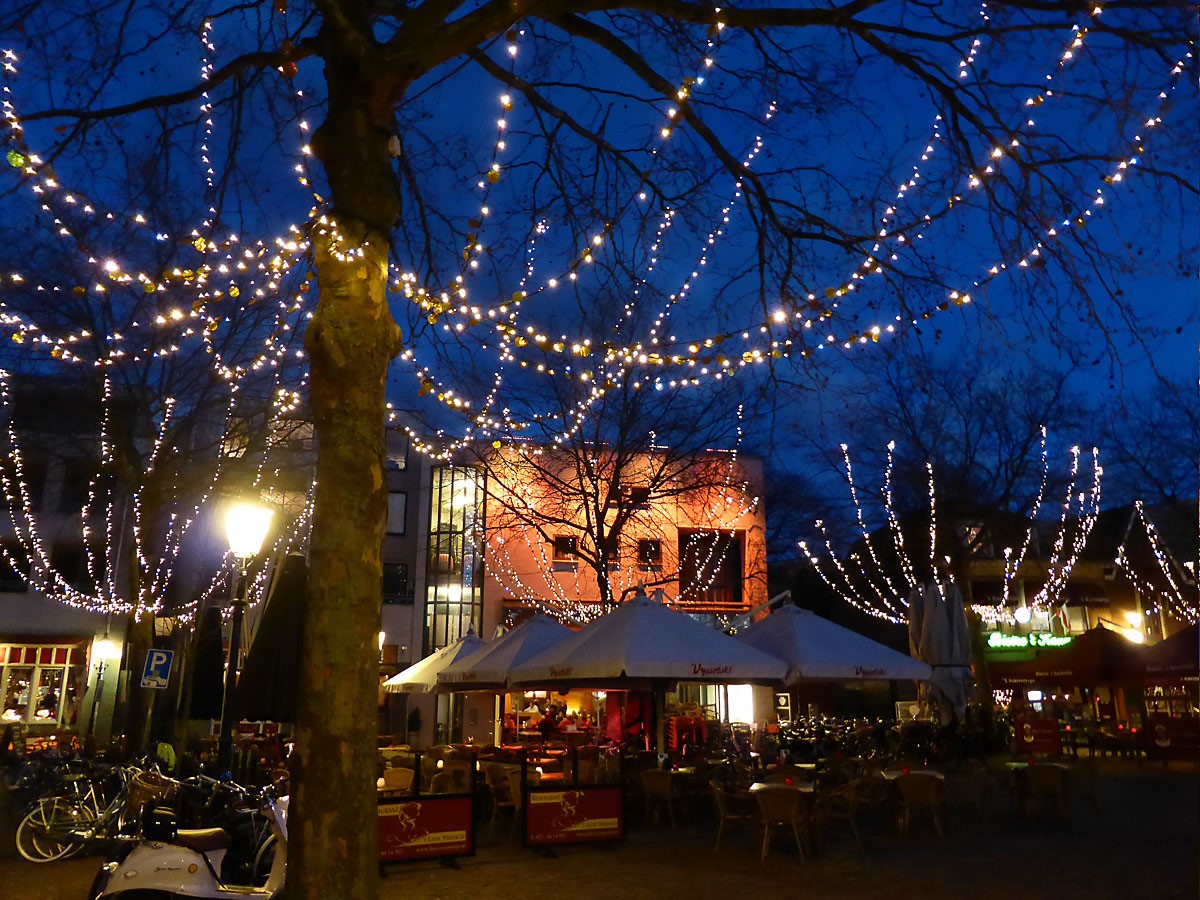
Speaking of financial uncertainty: in early 2016, the whole of culture-loving Amersfoort was shocked when it emerged that film house and theatre The Dear Lady was on the verge of bankruptcy.
The Dear Lady forms the social hub of cultural life in the Keistad. Small. Sympathetic appearance. A toehold of cosiness. If you watch a film in the downstairs room, you can hear above your head the rumbling of the other guests.
Overdue maintenance and mismanagement created a debt of many tonnes. Eventually, the municipality decided on an extra subsidy. It also brought in a new director, Friederike Weisner, from Utrecht film theatre 't Hoogt. Meanwhile, the worst problems seem to be behind us and last year it even passed the 100,000-visitor mark for the first time.
On the terrace of The Dear Lady a subject comes to mind that definitely deserves attention: the position of visual artists in the city. There has been a lot of fuss about it.
Protest march

For years, the municipality has been asking visual artists to have a say in art policy. According to quite a few artists without really being listened to. Apart from this, there are hardly any places for (beginning) local artists to exhibit.
Dormant discontent about this erupted late last year. It was triggered by the city council's decision to sell the accommodation of De WAR (a breeding ground for culture and technology) to a property developer despite fierce protests and a real protest march. CulturePress reported on this in detail.
The disillusionment was so great that a group of about 20 visual artists "fled the city". Not physically, but with their work. They decided to avoid their hometown and exhibit together in other places in the Netherlands. They are also not taking part in consultations on a new cultural vision.
Other stakeholders, on the contrary, continued to seek contact with the municipality. I spoke to one of them (Henk Logman, who supervises young artists and organises small-scale exhibitions, among other things) for CultuurPers about the importance of artists for a city.
Good and innovative initiatives
"On the contrary, the government could very well use the know-how and expertise of artists and designers," Logman said. "Use them more often for complex issues that exist in a city. Commission artists to help think about new plans and let them visualise them."
"Artists do need affordable playing space for this, and preferably in a place where they can do this together and where regulations are less of an issue. Take that away, as happened in Amersfoort with De WAR, then the need to stay is no longer there, artists move away and so you also take away the much-needed energy of renewal from a city that wants to keep developing."
My conclusion: a city struggling with its cultural identity should embrace artists instead of rejecting them.
Stale bread
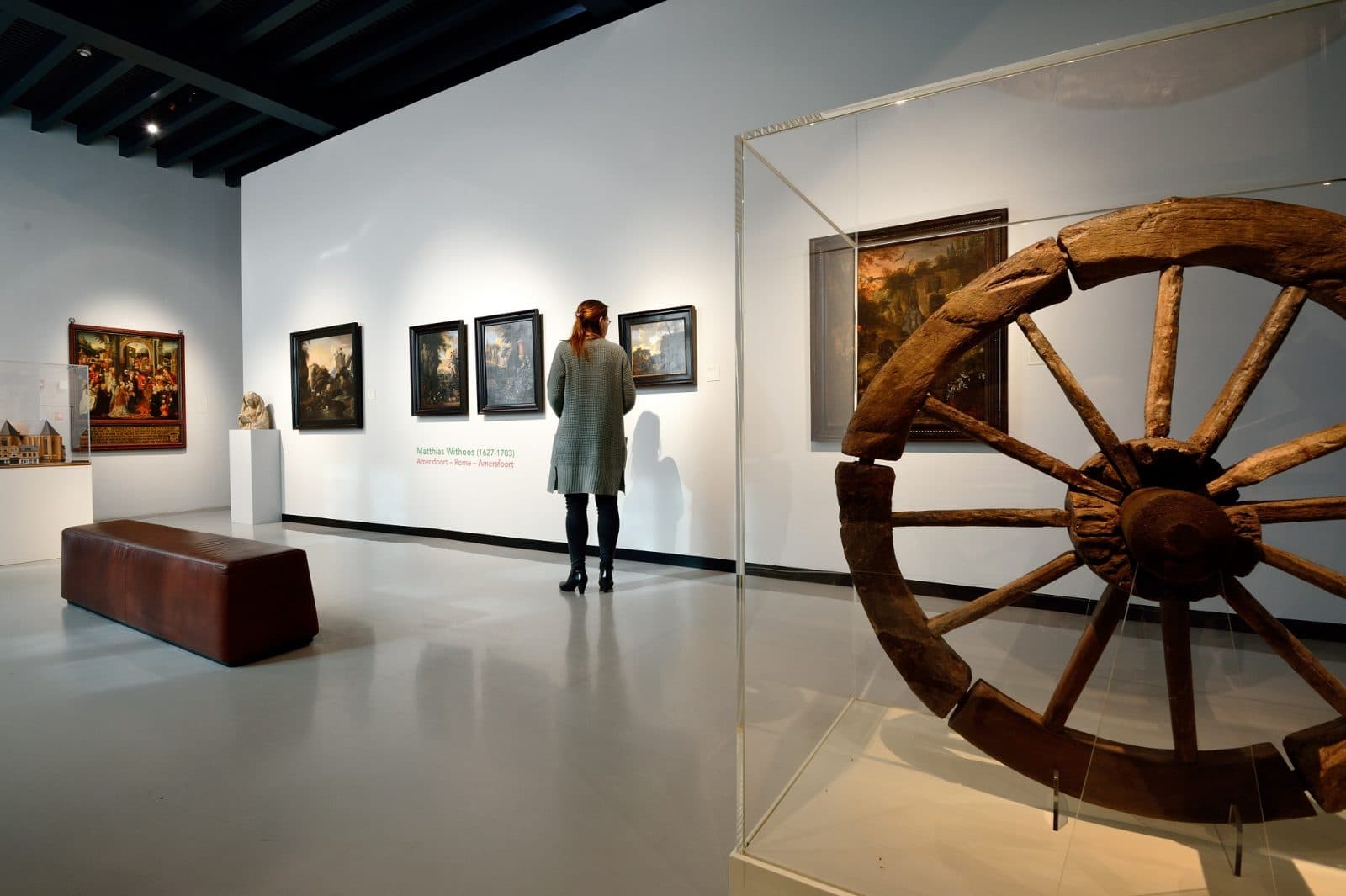
From the terrace of the The Dear Lady it is about a 10-minute walk to the inevitable end point of this cultural city walk. Along the way, I am near the Aegtenkapel and the Men's Hall. Both monuments have phenomenal acoustics and regularly host wonderful, small-scale, mainly classical concerts.
Flehite Museum I will leave today. Housed in three historic buildings, it showcases the city's history and presents exhibitions of (inter)national art from 1850 to 1950.
I have a love-hate relationship with Flehite. Sometimes it reminds me of stale bread, for instance when I see on the top floor the Eysink motorbikes, once made in Amersfoort.
Charley Toorop
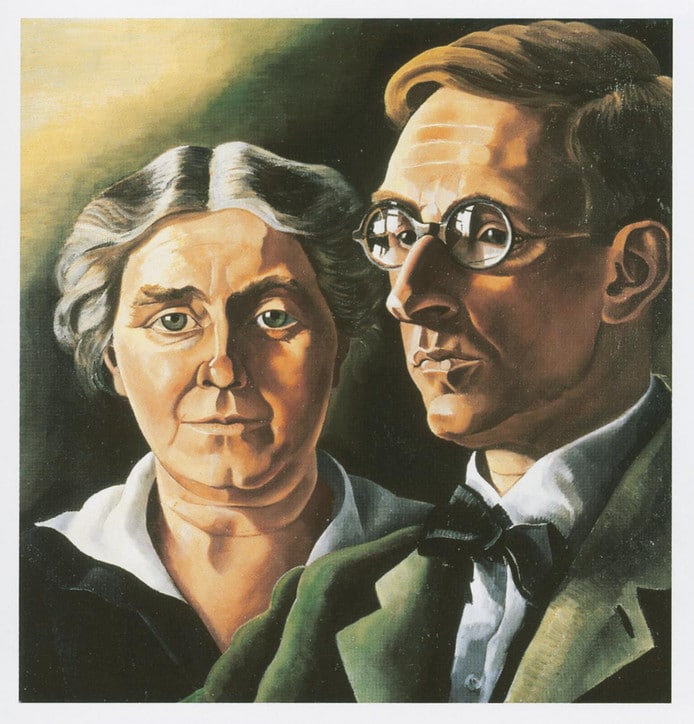
But the museum also has gems in its collection, such as a work by Charley Toorop. The painting shows Jacob Nieweg and his wife Neine. It comes with a nice story.
Flehite is the 'home museum' of some passionate Dutch collectors. The Van Schaik couple, for instance, donated their collection (including works by Charlotte van Pallandt, Jan Sluijters and Dirk Breed) to the museum. In addition, the public was allowed to get acquainted with Mr and Mrs Kamerbeek's collection.
Just before the start of the latter exhibition, curator Onno Maurer discovered a portrait of a painting Charley Toorop at an auction. Made by Jakob Nieweg. While painting the portrait of him and his wife. Thanks to the Kamerbeek family, the painting could be purchased. Both paintings are now regularly displayed side by side.
Spotlight
Museum Flehite Combines great art with mediocrity at best. Mirror of a big city rooted as a provincial town.
Amerfoort's ambition to count nationwide: the Eemhuis is the best proof of that. It had to be a building with metropolitan allure and it certainly succeeded. I think it is a wonderful eye-catcher, with the aluminium spheres on the façade reflected in the interior.

Among other things, the very nice library (with terraces and a coffee bar at the very top) and art hall KAdE are located in it. The art hall organises exhibitions on (modern) art, design & layout, architecture and modern visual culture. From early May, the exhibition 'The Colours of De Stijl' will be on show.
Mismanagement
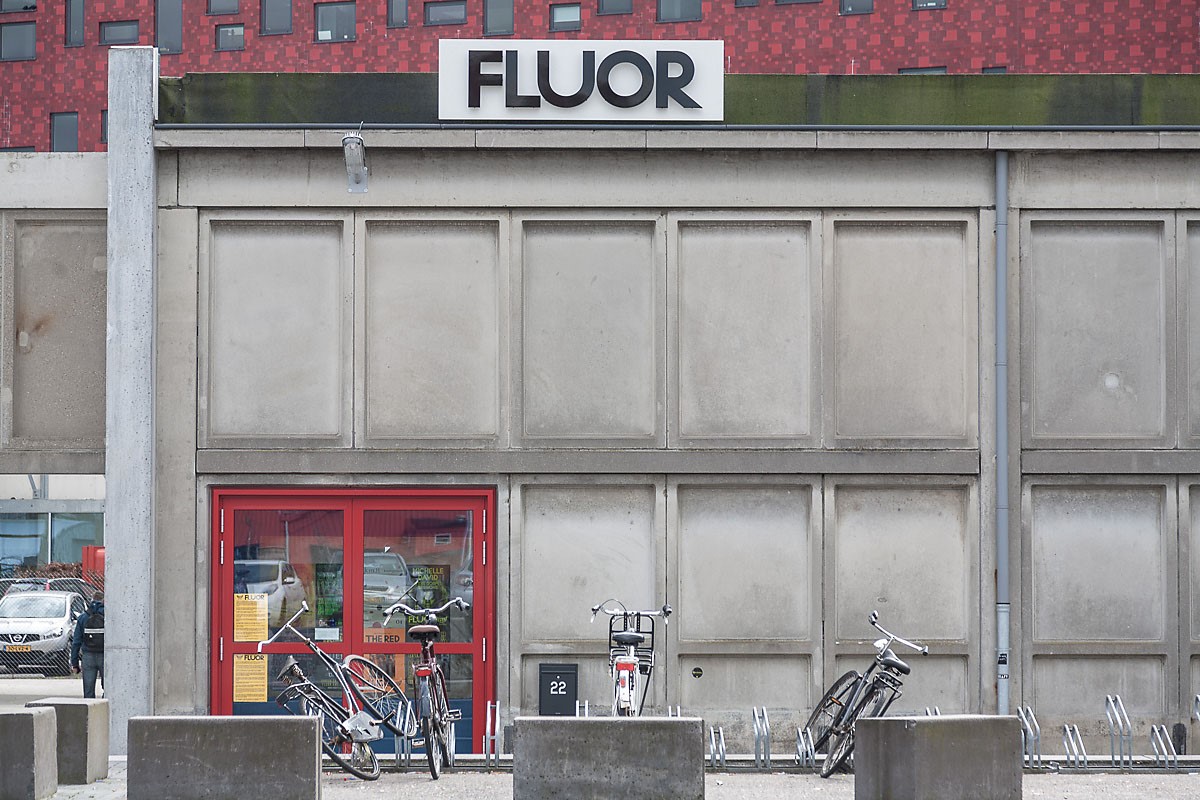
For all the pomp and circumstance, you would almost forget all the (financial) woes that are attached to building the Eemhuis. Miro Lucassen wrote the staggering account there Two false starts about.
Very briefly: a cost overrun of five million, an alderman and municipal secretary who had to resign and two art halls, because with the old location (premises of the National Cultural Heritage Agency) of KAdE a money-consuming 30-year lease had been signed.
[bol_product_links block_id=”bol_58e4c1c8b9367_selected-products" products="9200000040227133″ name="miro" sub_id="onno" link_color="003399″ subtitle_color="000000″ pricetype_color="000000″ price_color="CC3300″ deliverytime_color="009900″ background_colour="FFFFFF" border_colour="D2D2D2″ width="250″ cols="1″ show_bol_logo="0″ show_price="1″ show_rating="1″ show_deliverytime="1″ link_target="1″ image_size="0″ admin_preview="1″]And all the misery is not over yet. Originally, pop venue The Kelder also to the Eemhuis move, but in view of financial risks, this did not go ahead. KAdE took over The Cellar's spot.
The pop venue was given a new location. Admittedly near De Nieuwe Stad (the former Prodent toothpaste factory, now a lively location with many creative businesses), but on a dead square and with rent that was far too high. The name was changed to Fluor.
Chronicle of an announced failure. Due to high rent, disappointing revenues and lousy operations, the pop venue is currently in very dire straits, and it remains to be seen how long the municipality will come up with extra money.
As a local newspaper recently deftly headlined: 'the (Prodent) toothpaste smile is Fluor perished.
Struggle

Of Armando's displaced paintings, the second phase of the renovation of the Mondrian House, the position of visual artists, the financial woes surrounding the Eemhuis to the imminent demise of Fluor: for now, Amersfoort's struggle with culture will continue.
But it is spring and so the sun triumphs. Not forgetting that there is also a lot to enjoy culturally in the Keistad.

Sorry, just a little 'fact-check': https://nl.wikipedia.org/wiki/Randstad_(gebied) Amersfoort is just part of the randstad. Bit "fake" this....
Comments are closed.